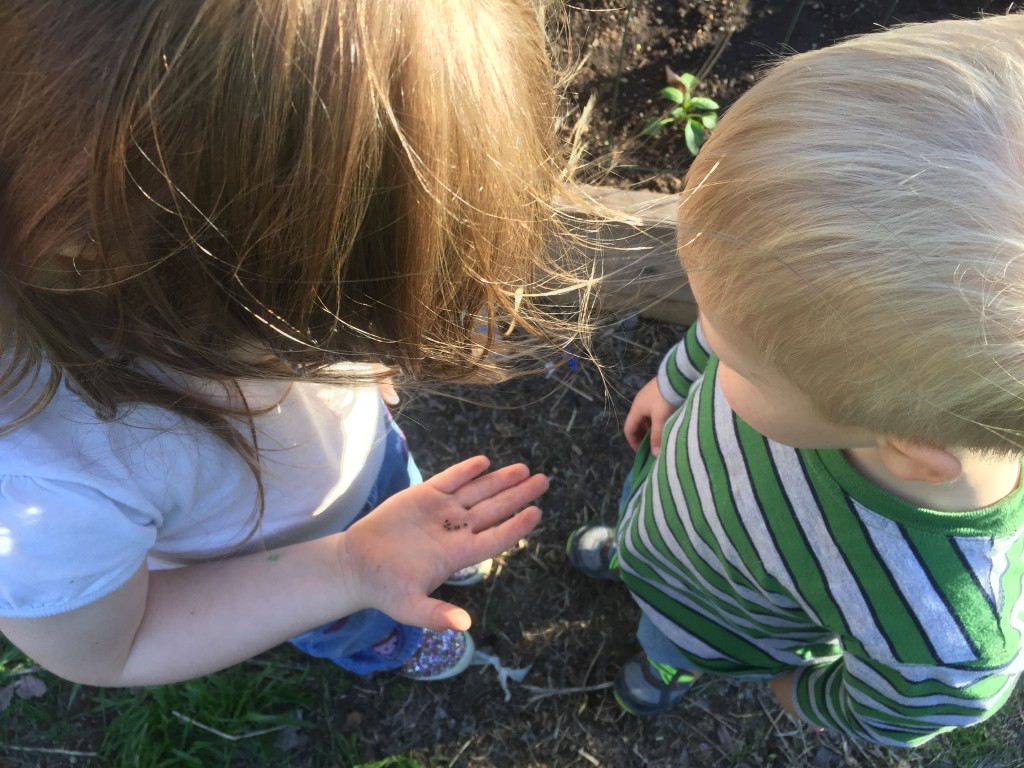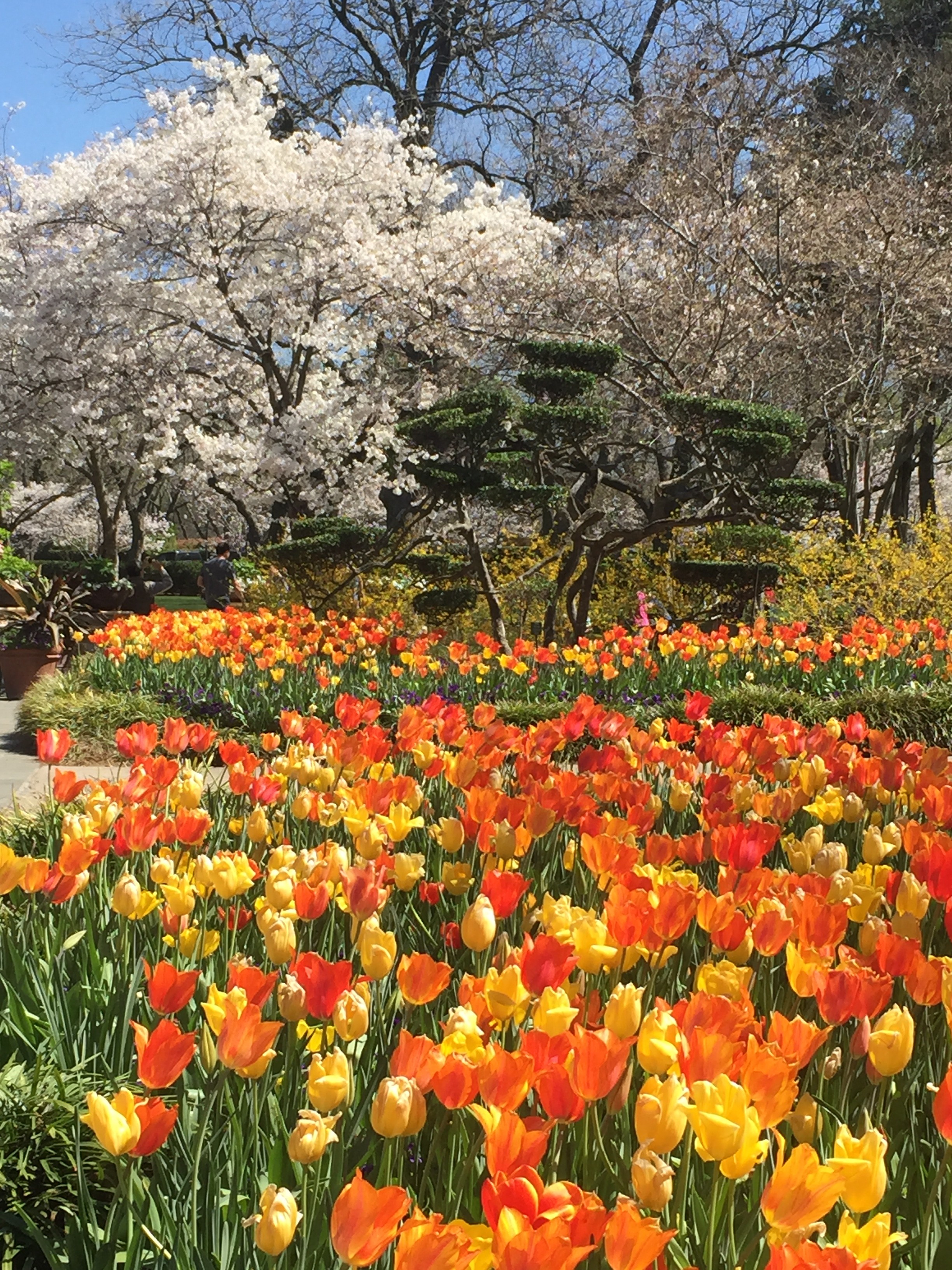What Florists Know [And What We Wished We Knew] About Spring Flowering Bulbs
The Transformative Experience of Basil Seed
At a time when gardeners are sowing seeds in preparation for the spring garden, let’s talk about seeds…basil seed in particular.
About a year ago, friend and fellow practitioner Charles Plummer of Youth with Faces told me about how basil seed can change before your very eyes, if you just add water. He had learned this from Rebecca Haller, HTM, during one of the Horticultural Therapy Institute’s courses.
Somewhat skeptical, I said, “Well, what happens?”
He encouraged, “Just give it a try and see what happens.”
It took me a couple more months – when I was preparing to lead a seed sowing session with one of my groups – before I was in the same room as basil seed, an eye dropper, and some water. So in taking Charles’ advice, I gave it a try.
And WOW!
Did you know that basil seed can change right before your eyes in just a few seconds?
In a world of instant gratification, clients can sometimes get impatient with the “slow growing” nature of plants in the garden. This is a great opportunity for a meaningful lesson, or actually a series of lessons, on the phrase “Good things come to those who wait.” The act of nurturing a plant – from seed to seedling to full grown plants that can be harvested for eating or collecting seed – can help the gardener experience the cyclical nature of life in real time. Some things just don’t happen overnight…patience is a virtue.
However, at other times, an activity with instantly gratifying results can be equally as powerful and transformative. Here, watching a basil seed from start to finish can help shift a person’s self-focused attention outside of themselves to something that is so tiny. In a sense, it can be incredibly grounding for one’s perspective to watch a seed that’s a centimeter in size transform itself. (Read more on the transformative nature of awe and the healing power of awe, supported by recently published research in the journal Emotion.)
So what exactly does the basil seed do when you add water? As Charles would say, just give it a try yourself. I’ll give you a sneak peek below.
 To start, gather together the following materials: basil seed (I used the Genovese type because it was handy, though I’m sure pretty much any basil seed would work), cup of water, eye dropper, and your hands.
To start, gather together the following materials: basil seed (I used the Genovese type because it was handy, though I’m sure pretty much any basil seed would work), cup of water, eye dropper, and your hands.
 Open your hand out flat so that the palm of your hand is facing up toward the sky. Gently tap some basil seed out of the seed packet into the palm of your hand. Take note of what the basil looks and feels like at this time. The seed is tiny in size and black in color – it kinda looks like the poppy seeds that get stuck in your teeth after eating a poppy seed bagel. Use a finger from your other hand to roll the dry seed around in your hand. Focus your attention on the sensation of the seed rolling around in your hand.
Open your hand out flat so that the palm of your hand is facing up toward the sky. Gently tap some basil seed out of the seed packet into the palm of your hand. Take note of what the basil looks and feels like at this time. The seed is tiny in size and black in color – it kinda looks like the poppy seeds that get stuck in your teeth after eating a poppy seed bagel. Use a finger from your other hand to roll the dry seed around in your hand. Focus your attention on the sensation of the seed rolling around in your hand.
 Next, get some water in your eye dropper and add a few drops of water over the top of the seed. Make sure the seed has contact with the water.
Next, get some water in your eye dropper and add a few drops of water over the top of the seed. Make sure the seed has contact with the water.
 Notice how the added water feels to your skin – cool and wet. And watch.
Notice how the added water feels to your skin – cool and wet. And watch.
 Focus all of your attention on the seed. Be patient and watch. It doesn’t happen instantly. And, don’t worry, the seeds aren’t jumping beans, so they won’t start popping up into your face. They also don’t grow spikes or turn into orange and blue polka dots.
Focus all of your attention on the seed. Be patient and watch. It doesn’t happen instantly. And, don’t worry, the seeds aren’t jumping beans, so they won’t start popping up into your face. They also don’t grow spikes or turn into orange and blue polka dots.
Just watch…
And watch…
And watch until…
There! Do you see it?!?
What happened? The basil started turning a different color. What color? It’s kind of a gray color, right?
Keep watching…
 After a few seconds – at least 30 seconds, probably more – the basil seed will soak up most, if not all, of the water. The seed will have changed from tiny, black seeds to slightly larger, puffier, whitish gray seeds. If you look very closely, you can actually see the layer of seed mucilage over the seed coat.
After a few seconds – at least 30 seconds, probably more – the basil seed will soak up most, if not all, of the water. The seed will have changed from tiny, black seeds to slightly larger, puffier, whitish gray seeds. If you look very closely, you can actually see the layer of seed mucilage over the seed coat.
So what is seed mucilage? It is a thin gelatinous layer that forms over seeds when exposed to moisture. Basil seeds form noticeable amounts of mucilage. You can even do this same experiment with chia seeds and notice the copious amounts of gel that form. Weird. (Read more about mucilage and its purpose here.)
After I first did this activity, I felt exhilarated and inspired to learn more about why these seeds do this – and every time I have done this activity since then, I’ve felt the same way. There is always a point – typically right when the water is added to the seeds – at which I think to myself, “Will the seeds change?” And then it happens.
Aren’t plants amazing?
Scintillating Tidbits About Orchids
Horticulture and Health According to Three Wise Men
What Florists Know [And What We Wish We Knew] About Holiday Plants
By Lesley Fleming, HTR, and Sarah Bayat
Photos by Susan Morgan
Celebrate the festive season with beloved holiday plants. To make the most of these colorful, live plants in the dark days of winter, consider the following tips.
Show-stopping sizes (miniature to large), double blooms, and a color spectrum from pure white or deep red to salmon orange and even stripes, amaryllis feels like a holiday miracle. Watch it grow daily until the blossom opens before your very eyes. Note that the larger the bulb, the larger the flower. Flowering occurs four to eight weeks after planting with the succession of bud openings lasting two weeks. Buds prefer several hours of direct sunlight and temperatures of 75-80 degrees F. Watering is not necessary once bud has cracked. Blossoms can be prolonged by moving flowers out of direct sunlight. Bulb will re-bloom in container or garden bed in milder climates.
Colorful and readily available in the holiday season, Christmas cactus are regarded as easy to maintain houseplants. In preparation for the holidays, the grower will have ensured 12 hours of darkness required for blooming at just the right time. The plant prefers to be in bright indirect light, root-bound in containers and soil drying between watering. Cuttings taken from Christmas cactus can be easily propagated.
Once home, place the fresh cut trunk in an appropriately sized reservoir-type stand that holds water. To prevent drying, place tree away from heat sources, keep tree watered, lower temperatures at night, and use low heat tree lights. Consider recycling the tree. Check out tips on how to care for a live tree with roots here.
Ruffled flowers in white, pink, and red, heart shaped leaves, and blossoms of every size make this plant charming. Avoid direct sunlight, provide good drainage watering from the roots up, and use water soluble fertilizer every two months. For re-blooming, let leaves die back, stop watering, place plant in cool, dark place, and let sit for several months. Then soak soil and resume regular care.
Now available in double blooms and many colors-pink, red, burgundy, yellow, white and even marbled colors, poinsettias are popular because they thrive for long periods of time with minimal care. They prefer temperatures of 70-80 and direct sunlight, but no drafts or sitting water. Poinsettias are not poisonous but the milky sap may irritate skin. Read about growing poinsettias outdoors here.
Authors Lesley Fleming and Sarah Bayat combine their talents for this series. Lesley is a registered horticultural therapist who uses holiday plants for therapeutic activities. Sarah is creative director of Floris Flowers Co.
This is the second in a series of four articles sharing tips on seasonal plants. The third article will offer tips for spring bulbs.
Unique Trees That Have Faced Adversity
Just like people, plants can tell some interesting stories. Check out the tales of these trees.
Wollemi pine (Wollemia nobilis). A prehistoric tree that grew 90 million years ago, the Wollemi pine was thought to be extinct until a stand of the trees was found about 20 years ago growing in a national park just north of Sydney, Australia. The photo above is of a Wollemi pine taken at the Royal Botanic Gardens, Kew, in London, England, about ten years ago. Read more about the Wollemi pine here.
Japanese white pine (Pinus parviflora). A nearly 400-year-old Japanese bonsai survived the Hiroshima blast and is now located at United States National Arboretum in Washington, D.C. Read more about this bonsai here and here.
Lodgepole pine (Pinus contorta). The 1988 fires burned over one million acres in Yellowstone National Park. Though it burned through acres of vegetation, the fire actually heated up the resin within the pine cones of the lodgepole pine, releasing the seeds which otherwise would have been held captive inside the cones for many years. Many seedlings germinated by the following year. Read more about the lodgepole pine here.
General Sherman giant redwood (Sequoiadendron giganteum). The world’s largest tree by volume is located in the Sequoia National Park in California. Check out the stats on the General Sherman tree here.
[Note: This article was originally published as part of a larger article “Warrior Plants” in the AHTA News Magazine for the American Horticultural Therapy Association.]















